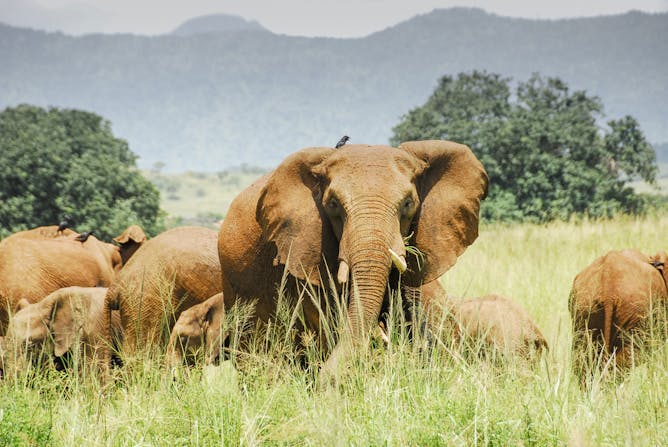|
Uganda is in the thick of things when it comes to the illegal trade in ivory. It is a transit country for the trade and in the last five years it’s been listed as one of the 10 countries linked to the most active trade flows. Kristof Titeca highlights what he found tracking the smuggling networks in Uganda and surrounding countries. He argues that understanding locations like border towns and middlemen can provide valuable insights into tackling the problem.
In cities and towns across South Africa, the scene is the same: historically white and well-resourced schools tend to boast excellent sports facilities, while pupils at schools in poorer areas play on dusty fields with little equipment. Apartheid’s dividing lines remain in place. Francois Cleophas explores the history and suggests that understanding it is crucial to creating real change.
|

CITES, calls Uganda a country of primary concern in the illicit ivory trade.
Shutterstock
Kristof Titeca, University of Antwerp
Locations like border towns as well as people acting as middlemen provide key insights into Uganda's ivory trade.
|
Education
|
-
Francois Cleophas, Stellenbosch University
The colonial and apartheid education project still echoes in South Africa's post-1994 school system.
|
|
Arts + Culture
|
-
Nick Malherbe, University of South Africa
Social psychologist Ignacio Martín-Baró's work reminds us of the urgency to bring all psychology into the orbit of liberation. Doing so allows a necessarily ambitious conception of liberation.
|
|
Environment + Energy
|
-
Theresa Laverty, Colorado State University
Scientists often use animals and plants as indicators to assess whether ecosystems are polluted. Tracking bats, which cover wide areas and need clean water, could become a way to find potable water.
|
|
From our international editions
|
-
Adrian Martineau, Queen Mary University of London
Vitamin D could help the 20m children worldwide who suffer from acute, severe malnutrition.
-
Anjana Susarla, Michigan State University
By 2022, people in developed countries may see more fake news than accurate information. Artificial intelligence may be to blame – but could also help people sort out the truth from lies.
-
Terrell Carver, University of Bristol
This is certainly a moment to bring Engels's shade out of the shadows.
-
Carlo Morelli, University of Dundee
Some say the gig economy is capitalism's final victory, but maybe it's not.
|
|